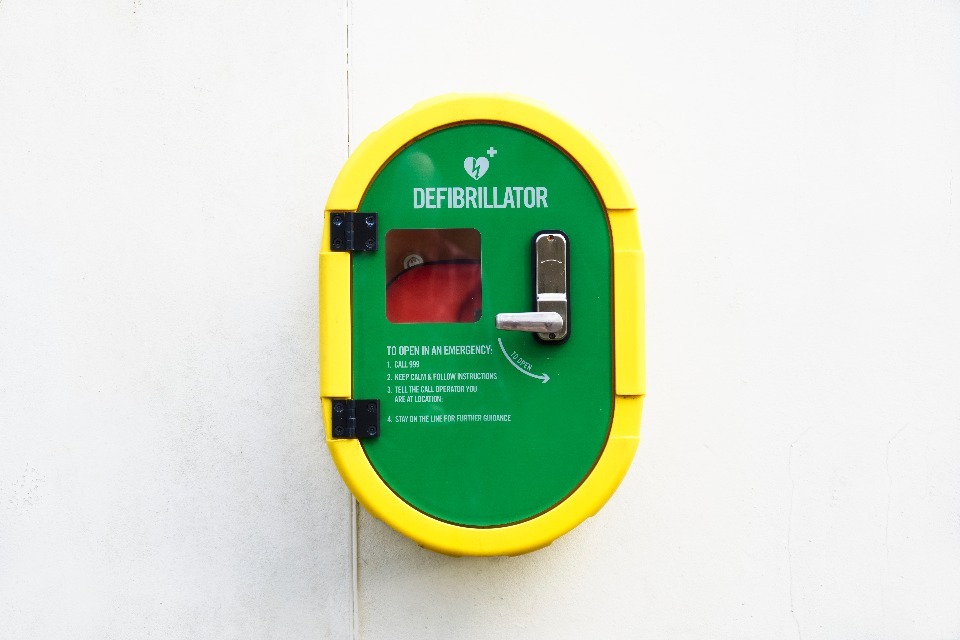Driving theory tests will include enhanced first aid questions from autumn 2025, building on existing first aid content that has been part of driver education for years.
The Driver and Vehicle Standards Agency (DVSA) is expanding the theory test question bank to
- include enhanced cardiopulmonary resuscitation (CPR) content
- add questions about automated external defibrillators (AEDs) for the first time
The move aims to address the UK’s low cardiac arrest survival rates by making sure more people know how to respond in emergencies.
Cardiac arrest what it is
A cardiac arrest is when your heart suddenly stops pumping blood around your body. They can be caused by
- dangerous heart rhythm disorders
- heart attack (this is when blood flow to part of the heart muscle is blocked, which can then trigger dangerous heart rhythms that stop the heart from pumping effectively)
- heart muscle and structural problems
- severe blood loss or oxygen shortage
- other factors, such as electrocution or drug overdoses
Signs and symptoms that suggest a person has gone into cardiac arrest include
- they appear not to be breathing
- they’re not moving
- they do not respond to any stimulation, such as being touched or spoken to
If you think somebody has gone into cardiac arrest
Call 999 (on speakerphone) immediately and start doing CPR.
If there is someone with you, ask them to find an AED and use it as soon as you can.
About the theory test
The driving theory test is taken by learner drivers before they can book their driving test. The test has 2 parts that are booked and taken together
- multiple-choice questions – 50 questions drawn from a bank of over 700 questions, covering topics from road signs and traffic laws to vehicle safety, hazard awareness and first aid – learners must get at least 43 out of 50 right to pass this section
- hazard perception – a video test about spotting hazards on the road
You must pass both parts to pass the overall test.
The changes involve no additional cost, test time, or difficulty – they simply update existing first aid content with current best practice.
Find out more about how the theory test works.
Around 2.4 million theory tests are taken each year, with a pass rate of 45.7% between July and September 2024. This means that hundreds of thousands of people annually will gain knowledge of life-saving skills through the enhanced questions.
Why drivers need these life-saving skills
Drivers are often first on the scene when someone suffers a cardiac arrest. Data from Resuscitation Council UK shows more than 40,000 out-of-hospital cardiac arrests occur in the UK each year, but fewer than 1 in 10 people currently survive.
40,000+ out-of-hospital cardiac arrests occur in the UK each year.
However, when CPR is given and an AED used within 3 to 5 minutes of collapse, survival rates can reach 70%.
Every minute without CPR and defibrillation reduces the chance of survival by up to 10%, making immediate bystander intervention crucial while waiting for emergency services.
Common scenarios where drivers might need CPR skills include
- road traffic incidents – collisions may cause cardiac arrest from trauma or shock, while drivers having cardiac arrests can cause incidents
- roadside emergencies – drivers can encounter people who have collapsed at bus stops, service stations, or while walking along roads – these may include joggers suffering sudden cardiac arrest, elderly pedestrians experiencing cardiac arrest, or people with underlying heart conditions who collapse in public spaces
- service area incidents – at motorway services, petrol stations, and car parks, drivers often witness medical emergencies where their intervention could save lives before professional help arrives
What learners will study
From autumn 2025, car and motorcycle theory test candidates will need to familiarise themselves with
- CPR techniques including proper hand placement and compression rates
- how to use automated external defibrillators
The questions will be added to other theory test types later.
The knowledge builds on existing first aid content in driving education materials. Official DVSA learning guides for car drivers have already been updated with improved information about these life-saving techniques
Updates to motorcycle publications will follow soon.
Example questions
The new questions will test practical knowledge that could save lives. Examples include
An adult casualty is not breathing. To maintain circulation, CPR should be given. What’s the correct depth to press down on their chest?
- 1 to 2 centimetres
- 5 to 6 centimetres (correct answer)
- 10 to 15 centimetres
- 15 to 20 centimetres
Who can use a public access defibrillator (AED)?
- Paramedics only
- First aiders only
- Doctors only
- Everyone (correct answer)
Other learning resources
Learner drivers can access free training resources, including guides on how to do CPR and use defibrillators. These have been created by the Resuscitation Councils from across Great Britain.
How to do CPR and use defribillators from Resuscitation Council UK.
Partnership behind the change
The programme represents collaboration between DVSA and leading organisations including Save a Life programmes in Wales, Scotland and Northern Ireland, plus Resuscitation Council UK.
Len Nokes, Chair of Save a Life Cymru, whose daughter Claire died from complications following cardiac arrest in 2017, said
When Claire had her cardiac arrest, some knowledge of CPR might have made a difference.
We hope that by making CPR and defibrillator use part of the theory test, we will significantly increase the number of people with this life-saving awareness.
James Cant, Chief Executive Officer of Resuscitation Council UK, said
By embedding these life-saving skills into such a widely taken assessment, we can help ensure that more people gain the knowledge and confidence to act during a cardiac arrest.
Mark Winn, DVSA Chief Driving Examiner, said
Part of being a safe and responsible driver is knowing what to do in an emergency – how to step in and make a real, life-saving difference.
Learning CPR and how to use an AED is a very simple skill and adding this into the official learning resource is a great way for DVSA to support the drive to raise awareness.
Supporting government priorities
The initiative supports the government’s Plan for Change commitment to build an NHS fit for the future in England by reducing preventable deaths.
When someone has a cardiac arrest, every minute counts. Quick action by bystanders before ambulance crews arrive can be the difference between life and death.
By restoring blood flow and oxygen to vital organs faster, immediate CPR and defibrillation can prevent organ failure and brain damage. This means survivors are less likely to need long-term rehabilitation, social care or permanent disability support. This reduces demand on NHS resources and helps ease pressure on health services.
Currently, public-access defibrillators are used in fewer than 10% of cardiac arrests, partly due to lack of public awareness and confidence in using them.
Training millions of new drivers will give more people the skills and confidence to act in those vital first minutes. This could significantly increase survival rates and potentially save thousands of lives each year.






